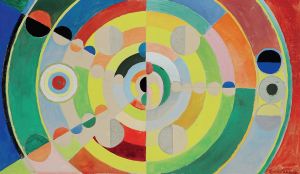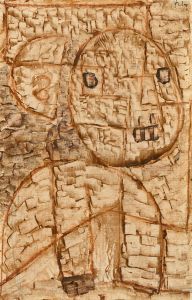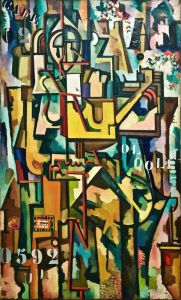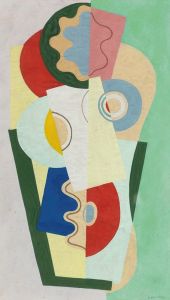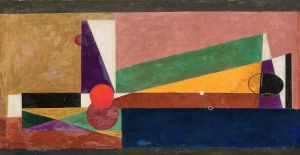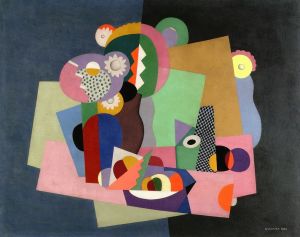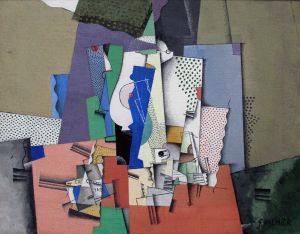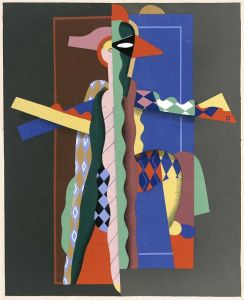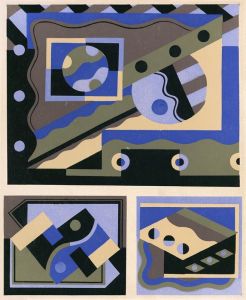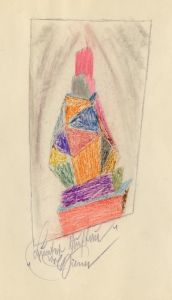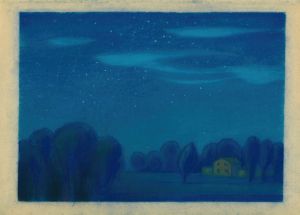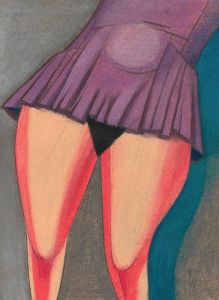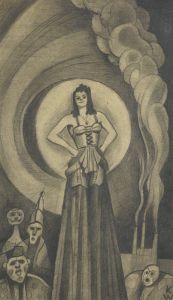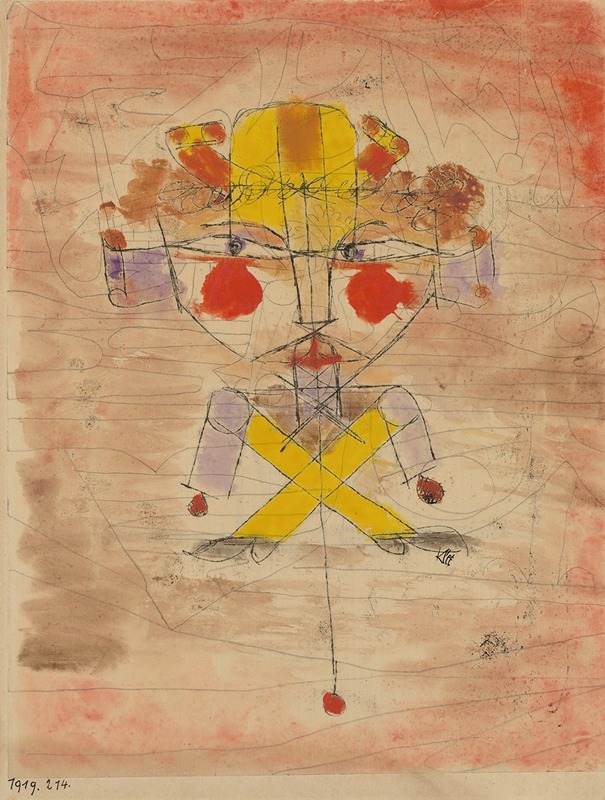
Jumping Jack
A hand-painted replica of Georges Valmier’s masterpiece Jumping Jack, meticulously crafted by professional artists to capture the true essence of the original. Each piece is created with museum-quality canvas and rare mineral pigments, carefully painted by experienced artists with delicate brushstrokes and rich, layered colors to perfectly recreate the texture of the original artwork. Unlike machine-printed reproductions, this hand-painted version brings the painting to life, infused with the artist’s emotions and skill in every stroke. Whether for personal collection or home decoration, it instantly elevates the artistic atmosphere of any space.
Georges Valmier was a notable French painter associated with the Cubist movement, which emerged in the early 20th century. Born on April 11, 1885, in Angoulême, France, Valmier's artistic journey was marked by his exploration of color and form, influenced by the avant-garde movements of his time. He studied at the École des Beaux-Arts in Paris, where he was exposed to various artistic styles that shaped his unique approach to painting.
Valmier's work is characterized by its vibrant use of color and geometric abstraction, aligning with the principles of Cubism, a movement pioneered by artists like Pablo Picasso and Georges Braque. Cubism sought to break away from traditional perspectives in art, representing subjects from multiple viewpoints and emphasizing the flat, two-dimensional surface of the canvas.
"Jumping Jack" is one of Valmier's works that exemplifies his commitment to the Cubist style. While specific details about the painting "Jumping Jack" are scarce, Valmier's oeuvre typically features bold colors and dynamic compositions, reflecting his interest in musicality and rhythm. His paintings often incorporate a sense of movement and playfulness, which can be seen in the way forms and colors interact on the canvas.
Throughout his career, Valmier was involved in various artistic endeavors beyond painting. He designed stage sets and costumes for theatrical productions, contributing to the broader cultural landscape of his time. His work in theater likely influenced his approach to visual art, infusing his paintings with a sense of drama and performance.
Valmier's contributions to the art world were recognized during his lifetime, and he participated in several exhibitions, including those organized by the Salon des Indépendants and the Salon d'Automne in Paris. These exhibitions were crucial platforms for avant-garde artists to showcase their work and gain recognition.
Despite his relatively short life—Valmier passed away on March 25, 1937—his impact on the art world endures. His paintings are held in various collections and continue to be studied for their innovative use of color and form. Valmier's work is a testament to the vibrancy and diversity of the Cubist movement, highlighting the ways in which artists of the early 20th century sought to redefine visual expression.
In summary, Georges Valmier's "Jumping Jack" is a reflection of his Cubist style, characterized by bold colors and geometric abstraction. Although specific information about this particular painting is limited, Valmier's broader body of work offers insight into his artistic vision and contributions to modern art. His legacy is preserved through his paintings, which continue to inspire and captivate audiences with their dynamic compositions and vibrant palettes.





